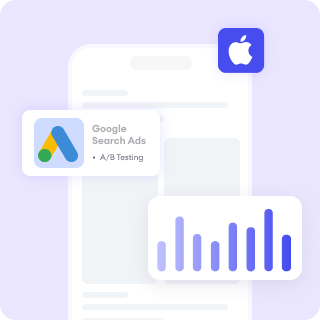A website audit is a crucial process to evaluate various aspects of a site, including its SEO, performance, structure, content, and user experience.
This guide will take you through the necessary steps to conduct a thorough website audit to ensure your website remains competitive and provides a seamless experience for visitors.
1. Define Audit Goals
Before diving into the audit process, it's essential to define the purpose of your audit. Ask yourself: What areas of my website need improvement? Are you aiming to enhance SEO, improve user experience, or boost site speed? Setting measurable goals is equally important. Consider traffic growth, higher conversion rates, or improving page load speed as key metrics for success.
2. Crawl the Website
Website crawling tools like Screaming Frog, Ahrefs, SEMrush, and Google Search Console are indispensable when conducting an audit. These tools will scan your site and identify issues such as broken links, duplicate content, missing meta tags, or any other technical problems that could hinder your website’s performance.
3. Check Site Structure
A well-organized website structure is vital for both search engines and users. Here are key points to focus on:
- URL Structure: Ensure URLs are short, descriptive, and use hyphens to separate words (e.g., www.yoursite.com/seo-audit-guide).
- Internal Linking: Evaluate internal links for functionality and ensure that the site has a logical flow to help both users and search engines navigate the content.
- Navigation: Simplify the navigation to ensure that visitors can easily find key pages.
- XML Sitemap: Make sure that your XML sitemap is up-to-date and submitted to search engines for better crawlability.
4. Evaluate Website Content
High-quality, valuable content plays a significant role in user experience and SEO. Here’s how to evaluate your content:
- Content Quality: Check for originality, usefulness, and proper formatting. Ensure the content answers user queries effectively and provides value.
- Keyword Optimization: Use tools like Google Keyword Planner to evaluate whether your content targets the right keywords. Ensure that primary pages (home page, product pages, blog posts) contain relevant keywords.
- Duplicate Content: Tools like Copyscape can help detect duplicate content across your site. Avoid having the same content appear on multiple pages.
5. On-Page SEO Analysis
On-page SEO is critical for making sure your content ranks well in search engine results pages. Here are the key factors to evaluate:
- Title Tags & Meta Descriptions: Ensure that each page has a unique and relevant title and meta description.
- Header Tags: Proper use of H1, H2, and H3 tags helps both SEO and readability. Make sure that pages are well-structured with these header tags.
- Image Alt Text: Use descriptive alt text for all images to enhance SEO and accessibility.
- Mobile-Friendliness: Google’s Mobile-Friendly Test helps you check whether your website is optimized for mobile devices.
- Content Length: Longer content often ranks better, so ensure pages contain enough information to satisfy search engine algorithms.
6. Technical SEO Audit
A website’s technical SEO is important for a website's visibility in search engines. Consider the following:
- Site Speed: Use tools like Google PageSpeed Insights or GTmetrix to assess site speed and pinpoint areas for improvement.
- Mobile Usability: Ensure that your site is responsive and performs well on different devices.
- Secure Website (HTTPS): Google values secure connections, so check if your site uses HTTPS. This is a ranking factor for search engines.
- Structured Data: Implement org markup to improve your site’s visibility in search results, particularly for rich snippets.
7. Backlink Profile Analysis
Backlinks remain a crucial ranking factor. Here’s how to analyze your backlink profile:
- Check Backlinks: Tools like Ahrefs or Moz provide insights into the quality and quantity of backlinks.
- Analyze Quality: Ensure backlinks come from authoritative and relevant websites. Disavow any toxic or spammy links that could negatively affect SEO.
- Competitor Comparison: Compare your backlinks with those of your competitors to identify potential link-building opportunities.
8. Review Analytics and Performance Metrics
Analyzing your website’s performance is crucial for understanding its effectiveness:
- Google Analytics: Review essential metrics like bounce rate, page views, session duration, and conversion rates.
- User Behavior: Tools like Hotjar and Crazy Egg provide heatmaps and user flow data, helping you understand how users navigate your site.
- Traffic Analysis: Identify traffic sources (organic, paid, social, etc.) and evaluate how well your website performs in attracting visitors.
9. Assess User Experience (UX)
User experience directly impacts how visitors interact with your site. Evaluate the following:
- Design & Usability: Is the website visually appealing and easy to use? Make sure the design aligns with your target audience’s expectations.
- Call to Action (CTA): Ensure CTAs are clearly visible and persuasive.
- Forms & Navigation: Test the functionality of forms, search bars, buttons, and sign-up processes. These should be easy for users to interact with.
10. Check Social Media Integration
Effective social media integration can enhance both user experience and SEO:
- Social Share Buttons: Ensure that social sharing buttons are integrated properly for easy sharing of your content.
- Social Signals: Check whether your website is receiving social engagement, as social signals can influence SEO indirectly.
11. Conduct Competitor Analysis
Competitor analysis is essential for staying ahead. Here’s what to focus on:
- Evaluate Competitors: Compare your website’s SEO performance, content, design, and structure with that of your top competitors. Select 3-5 top competitors and analyze thier website in terms of technical, online and offline SEO. You should also check their content.
- Identify Gaps: Look for areas where your website can outperform competitors. This could include better content, more quality backlinks, or superior user experience.
12. Create an Action Plan
After conducting the audit, create an action plan that outlines the steps needed to address the issues identified:
- Prioritize Issues: Rank the issues by their impact on SEO and user experience, focusing on high-priority items like fixing broken links or improving site speed.
- Set Timeline: Define a realistic timeline for resolving issues.
- Track Progress: Use tools like Google Analytics and Google Search Console to monitor improvements and track your site’s progress.
Tools You Can Use for a Website Audit:
- Screaming Frog: SEO audit, site crawling
- Ahrefs: Backlink analysis, SEO audit
- SEMrush: SEO audit, competitor analysis
- Google Analytics: Website performance, user behavior
- Google Search Console: SEO performance, crawl errors
- GTmetrix / PageSpeed Insights: Site speed
- Moz: Backlink profile, keyword tracking
- Copyscape: Duplicate content detection
- Hotjar / Crazy Egg: User behavior, heatmaps
Regular website audits will help you stay ahead of the competition and boost your website’s performance, visibility, and overall success.
Improve your website performance with FoxAdvert!
If you are looking forward on how to improve your website performance, our professional team of SEO experts at FoxAdvert can help you. Contact us today to start your journey 😊











